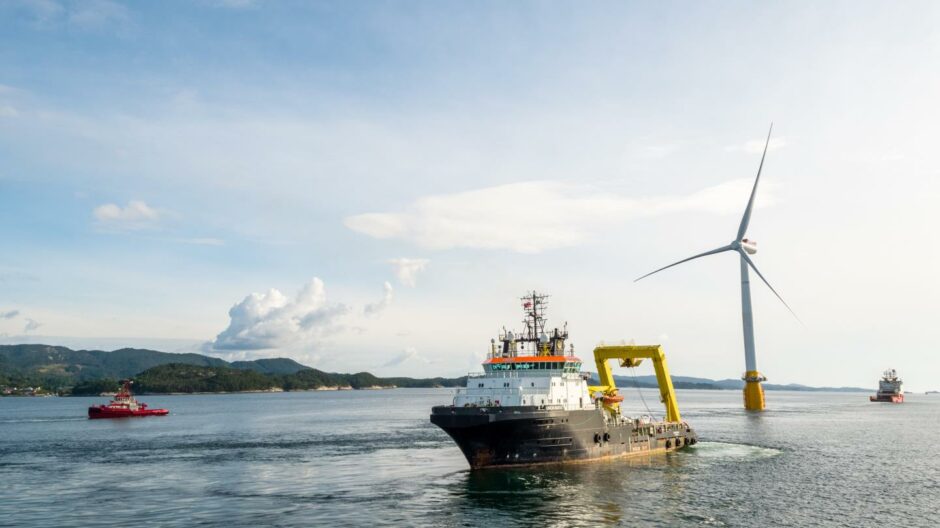
Equinor is to return all turbines from the world’s first floating wind farm to Norway for several months of maintenance.
Located off the coast of Peterhead, the Hywind Scotland project is the world’s first floating offshore wind farm. Opened in 2017, the 30MW scheme consists of five 6-MW turbines and generates enough electricity to power the equivalent of 34,000 UK homes.
However Norwegian operator Equinor (OSE:EQNR) says that after more than six years of service, operational data has indicated the need for “heavy maintenance”.
All five units are now set to be towed to Norway for overhaul by the Wergeland group in Gulen – the same site where its Norwegian sister project, Hywind Tampen, was mobilised.
The 11-turbine, 88-MW Tampen project was completed last year.
In a statement the company added: “This is the first such operation for a floating farm and the safest method to do this is to tow the turbines to shore and execute the operations in sheltered conditions.
“We will do this during the upcoming summer season and it is expected to take three to four months,” though an exact date was not specified.
“Wergeland is the closest port with offshore wind experience and sufficient water depth that can service these turbines. The work will be done in close collaboration with the turbine supplier Siemens Gamesa.”
The group said this would involve “exchanging some components, maintaining others and using the opportunity to do regular service”, though did not provide exact details.
Once the work is complete, all units will be returned and reconnected at the site.
Local expertise lacking
Industry experts said the need for maintenance after years at sea was “unsurprising”, but the decision to overhaul all units at once was unusual.
Evgenia Golysheva, VP of Strategy and Marketing at predictive analytics provider Onyx Insight said: “After seven years of operation, it is unsurprising that the turbines at Hywind Scotland require major component maintenance, however what is intriguing, is the necessity for such heavy maintenance across all five turbines on-site.
“This could suggest a more systemic issue or simply reflect opportunistic scheduling given the complexity of organizing these maintenance activities.”
Ms Golysheva also pointed to the “recurring need” to tow floating turbines off the Scottish coast to other countries, given an absence of infrastructure and skills in Scotland.
Last year a unit at the Kincardine floating wind farm, sited just 10 miles off Aberdeen, was towed hundreds of miles to Rotterdam for maintenance for the same reason.
At the time Tim Pick, the UK’s former offshore wind champion, described the situation as a “national disgrace” – though the project’s operators said local firms has been sought to ensure repairs could be undertaken in situ in future.
Ms Golysheva added: “Considering the increasing interest of the UK government in harnessing the potential of floating offshore wind for renewable generation targets and technology export opportunities, it is clear the domestic infrastructure required to support this drive is lacking.”
Recommended for you

 © Supplied by Mammoet
© Supplied by Mammoet